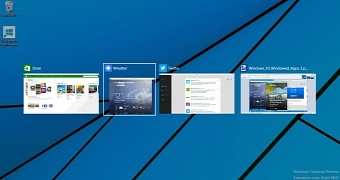The Alt + Tab app switching menu in Windows has always been one of the most useful features for both home and office users, but Microsoft has rarely improved its behavior, pretty much because it served its purpose very well with the existing set of options.
But the most recent updates prepared for Windows 10 more or less forces Microsoft to rethink the way the Alt + Tab menu works, and the upcoming OS releases are likely to bring a substantial makeover in this regard.
One of these updates will include Sets, a new Windows 10 feature that will bring tabs pretty much all across the operating system. Instead of adding tab support to just one app, Microsoft is revamping its app platform to bring this feature to the entire operating system, no matter if we’re talking about Microsoft Store apps or Win32 programs.
App and web browser tab switching
And because this would basically mean that several apps would run in the same window, the Alt + Tab menu will be updated to support this behavior, so it will also allow users to quickly switch from one tab to another.
This feature will be available not only for app tabs, but also for browser tabs, as Microsoft is looking into ways to make it more convenient to reach your content faster. Switching between apps will work just like now, while expanding a group of tabs within a specific app will require users to keep the selection for a few seconds on a select thumbnail.
Tabs will also make their way to Timeline, the new Windows feature that makes it possible to return to a set of activities within the last 30 days. This means users would be allowed to restore full groups of tabs instead of just an app.
As for the timing when all these improvements are projected to become available, Redstone 5 is a likely target, but Microsoft doesn’t want to rush things by any means, so it says that it’ll ship these features when they’re ready. This ETA should give the company enough time to refine the new behavior, though the sooner they land, the better for both users and Microsoft itself.

 14 DAY TRIAL //
14 DAY TRIAL //